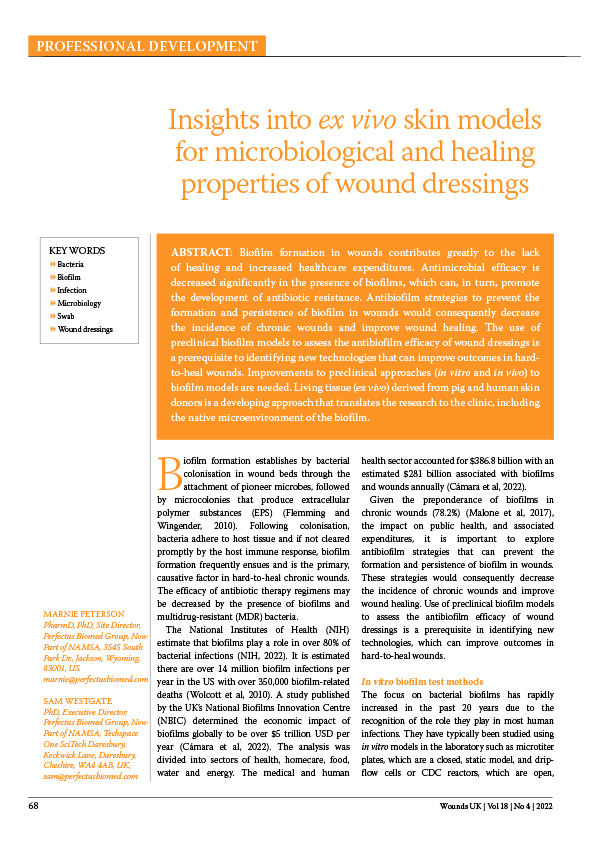Biofilm formation in wounds contributes greatly to the lack of healing and increased healthcare expenditures. Antimicrobial efficacy is decreased significantly in the presence of biofilms, which can, in turn, promote the development of antibiotic resistance. Antibiofilm strategies to prevent the formation and persistence of biofilm in wounds would consequently decrease the incidence of chronic wounds and improve wound healing. The use of preclinical biofilm models to assess the antibiofilm efficacy of wound dressings is a prerequisite to identifying new technologies that can improve outcomes in hardto- heal wounds. Improvements to preclinical approaches (in vitro and in vivo) to biofilm models are needed. Living tissue (ex vivo) derived from pig and human skin donors is a developing approach that translates the research to the clinic, including the native microenvironment of the biofilm.







